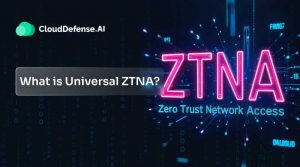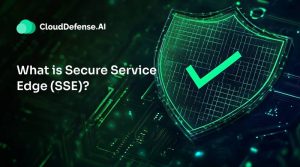If you’re just getting into serverless computing, you’re probably pleased with the flexibility and scalability it offers. But let’s talk about something crucial that often gets overlooked — security.
With traditional servers, you knew exactly where your security boundaries were. In the serverless world? It’s a whole different game. But don’t worry though!
Here, we’re breaking down the top 10 serverless security practices that’ll keep your applications safe. Let’s get started.
What Is Serverless Architecture?
In serverless architecture, developers can build and run applications without managing the underlying servers. It’s a cloud-based service whereby the cloud provider handles the infrastructure while the teams focus on writing code.
In other words, serverless is not really “server-less.” The servers are still there, but this is where the key advantage comes in: You do not need to manage them anymore; the cloud provider does all that tedious infrastructure stuff for you.
- No server management required: Developers have no need to provision or manage servers.
- Scalable: The architecture does this automatically, without human intervention, to meet the traffic demands.
- Pay-per-use model: You pay only for the computing time used, which again brings down the cost drastically.
- Faster deployments: With fewer infrastructure concerns, one can update and release applications faster.
Core technical components:
- Function-as-a-Service (FaaS) — your code runs in stateless containers.
- Event-driven execution — Functions spin up only when triggered.
- Built-in auto-scaling — From 0 to millions of requests, without your input.
- Millisecond billing — You pay only for compute time used.
Look at the numbers: 53% of companies are using serverless already in 2022, whereas it was at 30% in 2020. Makes sense—who wants to deal with managing servers when you could be building cool stuff? That is why more and more teams are jumping to this. Zero infrastructure headaches mean more time for actual innovation.
Top 10 Serverless Security Best Practices
1. Use the Principle of Least Privilege
In serverless architecture, access control becomes even more important. Most serious vulnerabilities are often caused by granting superfluous permissions to users or functions.
- Limit permissions: Allow each function to have only those privileges that are necessary to complete the task.
- Granular control: Give permission to perform a certain task, not a general role.
- Review regularly: Permissions should be audited from time to time to ensure they serve a relevant and needed purpose.
The principle of least privilege limits the amount of potential damage that can be caused by a compromised function or user account. It’s a simple, yet highly effective way to reduce risks: not granting more access than necessary keeps your security tight.
2. Patch Function Dependencies
Your serverless functions depend on third-party libraries and their dependencies to run. In case these dependencies are not updated, they might bring along vulnerabilities into your systems.
- Stay updated: If using libraries, then keep an eye on their updates. Often, new versions patch security holes.
- Automate updates: Utilize available tools to automate dependency management in order to ensure that libraries are updated regularly.
- Identify vulnerabilities: On a regular basis, scan dependencies for known security vulnerabilities with the use of such tools as OWASP Dependency-Check or GitHub Dependabot.
- Test before deploying: Always test updates in a staging environment before pushing them to production. This ensures that updates don’t break your functions.
The fact that the dependencies are not patched may introduce very hard-to-detect yet easy-to-exploit security risks. Attackers usually attack known vulnerabilities in libraries that are out of date. By keeping up with the updates, you make it that much more difficult for attackers to take advantage of these weaknesses.
First, one needs to understand that a serverless function is not your code but an ecosystem of libraries it relies on. If any of these libraries have a vulnerability, then your whole function is in danger. Regular patching is a proactive approach for preventing attacks before they could strike.
3. Keep Functions Isolated for Better Security
Each function in a serverless setup needs to be treated as its own security perimeter. It doesn’t matter if multiple functions work together in a workflow—each one should stand on its own when it comes to security.
Here’s the problem: Let’s say you have a subscribeToEmailNotification function that sanitizes input, and then the sendNotification function sends the notification.
You might think that skipping sanitization in sendNotification is fine because it was already done in subscribeToEmailNotification. But here’s the thing: If you later add a new function, like subscribeToSMSNotification, that doesn’t sanitize input, that’s a serious concern. It means sendNotification will process unsanitized data, which opens the door to vulnerabilities.
What you need to do:
- Don’t depend on function ordering: Just because one function calls another doesn’t mean you’re safe. Functions change over time, and you can’t rely on access paths staying the same.
- Every function is its own perimeter: Treat every function as if its input is untrusted. Always sanitize it, no matter where it comes from.
- Standardize with security libraries: Use proven security libraries for input validation, and make sure they’re used consistently across all functions.
By keeping functions isolated like this, you reduce the risk of one weak link compromising the whole system. Simple but effective.
4. Be Cautious with Third-Party Dependencies
Using third-party libraries can save time, but they also come with risks. Many libraries aren’t built with security as a priority. When you pull in dependencies, you may be introducing vulnerabilities that could compromise your app.
Take a look at what happened in 2017—an exploit on GitHub allowed attackers to take control of NPM accounts, affecting a huge part of the ecosystem. If this kind of vulnerability exists, it means that using third-party packages could make your app unsafe if you’re not careful.
Does this mean you shouldn’t use third-party dependencies? No. There are some excellent tools out there. But you have to understand the risks and manage them.
Here’s what you need to do:
- Check the number of dependencies: The more dependencies, the more attack vectors. If there are too many, especially from different authors, the risk increases.
- Look deeper into the chain: Don’t just check direct dependencies. Explore the dependencies of dependencies, and so on. It can be tedious, but it’s important.
- Lock your dependencies: Use tools like package locks or NPM shrinkwrap to freeze the versions of your dependencies. This prevents unreviewed updates from sneaking into your app.
At CloudDefense.AI, we prioritize securing every aspect of your cloud applications. We use tools like Software Composition Analysis (SCA) to assess vulnerabilities in your third-party packages and proactively manage dependencies. It’s critical to use these tools, along with best practices, to ensure your serverless applications remain secure.
5. Protect User Data
Your users trust you with their private information—whether that’s emails, phone numbers, credit card details, or even personal preferences. It’s your responsibility to protect that data.
Serverless applications need access to data to function. This often means transferring data between cloud services like Elasticache, RDS, DynamoDB, and other third-party APIs. So, ensuring that the data is secure both in transit and at rest is critical.
Here’s how to protect user data:
- Encrypt data in transit: Always use a secure protocol like TLS to encrypt data while it’s being transferred. Make sure traffic to and from your API Gateway is HTTPS. And ensure front-end pages are running on HTTPS too.
- Encrypt data at rest: If you’re using DynamoDB, enable automatic encryption. For MySQL or similar, make sure passwords are encrypted using a salted hashing function. Also, encrypt other sensitive data with a secure key.
- Don’t expose sensitive data in logs: It’s a bad practice to log clear-text passwords and sensitive data. Don’t let that kind of information end up in logs where it could be exposed.
- Be careful with alerts: Alerts should never contain sensitive data or full stack dumps. If you send alerts via SMS or email, don’t include critical user information.
The goal is to minimize exposure and keep things secure at all times.
6. Logging is Essential
In serverless setup, logging is often overlooked. Unlike traditional server-based apps that come with built-in logging, serverless applications don’t automatically track everything. If you don’t implement logging yourself, the app will run, and you’ll have no insight into what happened.
Logging helps you understand if something’s going wrong. In a serverless environment, it’s on you to build the logging infrastructure that keeps your app secure and operational.
Here’s a list of things you should always log:
- Logins: Record the IP address, device type, and other relevant details.
- Failed logins: Track the number of attempts, along with IP and device information.
- Account changes: Log modifications like password updates, email changes, etc.
- Database actions: Record inserts, modifications, and deletions.
- Financial transactions: Log details like transaction ID, user account, and the amount.
But logging alone isn’t enough. You have to be able to act on the data you collect. For example, you should limit failed login attempts to prevent brute-force attacks. Track failures by IP address and set alerts if certain thresholds are reached.
Consider these metrics:
- Database connections
- Queries per second
- Memory consumption
- Execution time
Finally, make sure to capture meaningful error messages. While you can show users a generic “500 error,” your system should capture all relevant details (without sensitive info). This means stack traces, inputs, user data, and other context. Set up alerts for major issues so you can quickly address them.
7. Follow Secure Coding Practices
This is basic, solid advice. Secure, well-tested code is the foundation of securing your application. Always code defensively. Expect to receive bad data and prepare your app to handle it properly. If the data doesn’t match the expected pattern, your code should throw an error and notify you right away. Don’t take anything for granted—sanitize all user inputs and escape any potentially harmful data.
Here’s what you need to keep in mind:
- Sanitize user input: Always strip or escape potentially dangerous content, like SQL commands or <script> tags.
- Set string length limits: It’s easy to forget, but always define maximum string lengths to prevent buffer overflow attacks.
- Validate inputs: Always check input types and ranges to avoid unexpected behavior.
Also, consider these tips for writing secure, efficient serverless code:
- Proper parsing: Avoid risky functions like eval(). It can run dangerous code on the backend. Instead, use JSON.parse(), which only handles correctly formatted JSON.
- Minimize side effects: Aim to write pure functions. These don’t alter variables or data outside of their defined scope. Pure functions will always produce the same output given the same input, making your code easier to debug and test.
- Be cautious with frozen connections: AWS Lambda’s feature of reusing connections and variables can be powerful, but if you assign user-specific data to a variable outside your main function, it can leak between users and create issues. Always make sure user data is handled properly within the scope of the function.
Good, secure code is your first line of defense. Build it right, and your app will be much safer.
8. Securing Access Keys, Credentials, and Sensitive Data
We’ve discussed the importance of the Least Privilege Principle, especially when it comes to securing access keys. These keys often get leaked—whether through GitHub mistakes or hard-coding in server scripts.
Here’s what you need to do to make sure your keys stay secure:
- Separate dev and prod environments: Keep production systems secure by using different accounts for development and production.
- Separate keys for each developer: This lets you control access and easily revoke keys when needed.
- Use different keys for different projects: Isolating keys reduces the impact of a compromised one.
- Rotate keys regularly: Regularly rotating keys (monthly or more) limits the risk from stealth attacks. Assign someone to manage this process.
- Stick to the Least Privilege Principle: Developers don’t need broad access. Only grant necessary permissions, and avoid using wildcard characters (*).
9. Build Security Into Every Step of the SDLC
Security needs to be a core part of your development process, not just something you tack on during testing. If you wait until the testing phase to think about security, you’re already behind. Every stage of the Software Development Lifecycle (SDLC) should have security measures built in to prevent vulnerabilities from slipping through.
Here’s how to do it effectively:
- Requirements phase: Define clear security requirements alongside your functional ones. Identify what needs to be protected, assess potential risks, and factor in regulatory compliance if applicable.
- Design phase: Build secure architecture from the ground up. Implement proper encryption, ensure secure data flows, and use threat modeling to analyze and reduce potential attack vectors.
- Development phase: Write clean, defensive code. Sanitize inputs, use parameterized queries to avoid SQL injection, and ensure developers understand and apply secure coding standards. Use static code analysis tools to catch vulnerabilities as you write.
- Testing phase: Go beyond unit tests and integration tests. Run comprehensive security tests, including dynamic scans, penetration tests, and vulnerability assessments to identify weak points in real-world conditions.
- Deployment phase: Secure your infrastructure. Use hardened configurations, deploy only what’s necessary, and set strict access controls. Double-check for misconfigurations before your app goes live.
- Maintenance phase: Stay proactive. Regularly apply security patches, monitor for new vulnerabilities, and respond to threats quickly. Automate logging and threat detection with tools like AWS Security Hub or Azure Defender.
Security isn’t a final step but it’s a continuous process. Bake it into your SDLC from day one. This approach saves time, cuts costs, and keeps your system resilient against evolving threats. Stay ahead, or risk being left vulnerable.
10. DevSecOps Implementation
Let’s be real—you can’t just run some security tests on your app at the end and hope it holds up. Security has to be part of every single step in your development process. That’s where DevSecOps comes into play. You automate security checks, catch vulnerabilities early, and ship code that’s both fast and secure.
This is exactly where CloudDefense.ai comes in. Our fully integrated DevSecOps suite handles all the heavy lifting, so you can focus on shipping great products. Whether it’s scanning your code, monitoring your open-source dependencies, or locking down your cloud setup, CloudDefense.ai covers it all.
Here’s what you get:
- SAST (Static Application Security Testing): SAST detects insecure code before it even touches production.
- SCA (Software Composition Analysis): SCA monitors your open-source dependencies for vulnerabilities.
- DAST (Dynamic Application Security Testing): DAST simulates real-world attacks on your live app.
- API Scanning: API Scanning ensures your APIs are secure, detecting misconfigurations, excessive permissions, or exposed data.
- IaC (Infrastructure as Code) Scanning: IaC finds and fixes misconfigurations in your Terraform, CloudFormation, or other IaC templates to prevent weak infrastructure setups.
CloudDefense.AI makes it simple. No manual processes, no bottlenecks—just smooth, automated security built right into your workflow. DevSecOps with CloudDefense.AI makes sure you’re not just moving fast—you’re moving fast and secure.
Conclusion
When it comes to serverless security, there’s no room for mistakes, as your whole infrastructure depends on it. By following these top 10 serverless security best practices, you’re not just protecting your app—you’re protecting your business, your users, and your reputation.
But let’s be honest, you need the right tools to make this happen. CloudDefense.AI is the solution you need. We’ve got the technology and expertise to help you secure your serverless environment from the ground up. Don’t wait until something goes wrong—act now.
Ready to take the next step? Book a free demo today and see firsthand how CloudDefense.AI can secure your serverless applications.
FAQs
Is serverless faster than server?
Serverless technology may yield faster response times for specific tasks by dynamically adjusting resources to meet incoming demands. Nevertheless, the speed differential varies according to the specific usage and the efficiency of the serverless application’s design.
How can serverless improve security?
Serverless can enhance security through its automatic resource scaling, managed infrastructure, and the inclusion of inherent security features provided by cloud service providers. It reduces potential points of attack, facilitates secure setups, and simplifies security administration, thus streamlining the implementation of security best practices.
Is serverless inherently less secure?
Serverless technology isn’t inherently less secure, but it does introduce unique security complexities. Issues like misconfigurations, dependencies, and insufficient access control can introduce vulnerabilities. Tackling these concerns with best practices remains crucial in maintaining a secure serverless environment.







